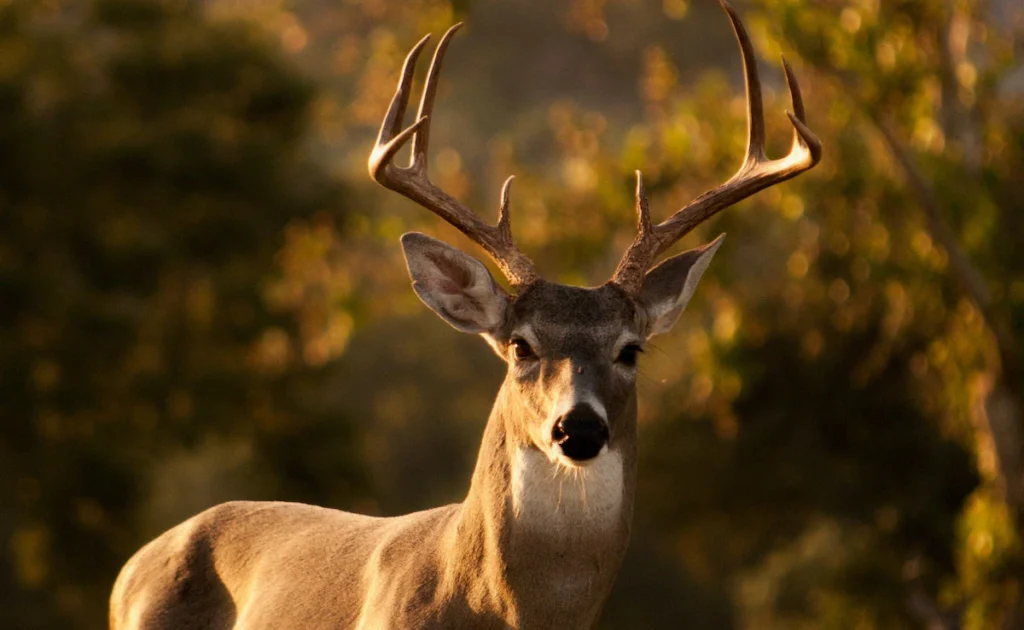“Zombie deer disease” is a nickname given to Chronic Wasting Disease (CWD), a fatal condition that affects the brain and nervous system of deer, elk, and moose. The term “zombie” arises from the behavior and appearance of infected animals, which may show signs of severe weight loss, stumbling, lack of coordination, drooling, and a blank, vacant stare. These symptoms make the animals appear like the living dead, hence the eerie name.
How Does Chronic Wasting Disease Affect Animals?
Chronic Wasting Disease is part of a family of diseases known as prion diseases. Prions are misfolded proteins that cause a chain reaction of misfolding in other normal proteins, leading to brain damage. Infected animals can carry the disease for months or even years before showing symptoms. When symptoms do appear, they progress rapidly, leading to severe neurological impairment and eventually death.
Where Has CWD Been Found?
CWD was first identified in captive deer in Colorado in the late 1960s. Since then, it has spread to wild populations and has been detected in numerous states across the United States, several provinces in Canada, and even in parts of Scandinavia and South Korea. The disease is spreading geographically, and its prevalence in affected areas is increasing.
Can Humans Contract CWD?
As of now, there have been no confirmed cases of Zombie Deer Disease Humans. However, the disease’s similarity to other prion diseases that do affect humans, such as Creutzfeldt-Jakob disease (CJD), raises significant concerns. Some prion diseases, like variant CJD, have crossed the species barrier from animals to humans, which happened in the case of Mad Cow Disease in the 1990s.
The Connection to Creutzfeldt-Jakob Disease (CJD)
Creutzfeldt-Jakob disease (CJD) is a rare, degenerative, fatal brain disorder in humans. Sporadic CJD occurs with no known cause, while variant CJD has been linked to consumption of beef infected with bovine spongiform encephalopathy (BSE), or Mad Cow Disease. Recently, medical case reports from Texas highlighted the deaths of two hunters who frequently consumed deer meat from CWD-infected areas. Both men died of CJD, prompting questions about a potential link between CWD and human prion diseases.
The Scientific Debate: Can CWD Infect Humans?
Scientists are divided on whether CWD can infect humans. Experimental studies have shown that certain non-human primates can contract CWD through consuming infected meat, suggesting a potential risk. However, direct evidence of transmission to humans is still lacking. The Centers for Disease Control and Prevention (CDC) emphasizes the need for more research to determine if and how CWD could pose a threat to human health.
Precautionary Measures for Hunters and Meat Consumers
Given the uncertainty, experts recommend several precautionary measures for hunters and consumers of venison:
- Testing: Have deer and elk tested for CWD before consuming their meat, especially in areas where the disease is known to be present.
- Proper Processing: Avoid cutting through the backbone or spinal tissues and remove the meat in a manner that minimizes contact with potentially infected parts.
- Use of Protective Gear: Wear gloves when field-dressing animals and thoroughly wash hands and equipment afterward.
- Regulatory Compliance: Follow local guidelines and regulations regarding the hunting and processing of deer in CWD-endemic areas.
The Role of Surveillance and Research
Increased surveillance and research are crucial in understanding and managing the risks associated with CWD. Wildlife agencies continuously monitor deer populations for signs of the disease and implement measures to control its spread. Researchers are exploring the molecular mechanisms of prion diseases, the potential for species barriers, and effective detection methods.
The Impact of Climate Change
Some experts believe that climate change could exacerbate the spread of CWD. Warmer temperatures and changes in habitats may alter the interactions between wildlife species and increase the transmission rate of prion diseases. This potential impact underscores the need for proactive measures in wildlife management and disease prevention.
Learning from History: Mad Cow Disease
The outbreak of Mad Cow Disease in the 1990s serves as a historical precedent. Initially, bovine spongiform encephalopathy (BSE) was not considered a threat to humans until variant CJD cases emerged. This history highlights the importance of caution and rigorous scientific investigation when dealing with prion diseases.
The Global Perspective
CWD is not confined to North America; it has also been detected in reindeer and moose in Scandinavia and South Korea. This global spread indicates that CWD is a growing concern for wildlife conservation and public health worldwide. International cooperation and information sharing are vital for tracking and controlling the disease.
What Should the Public Do?
Public awareness and education are key components in addressing the challenges posed by Zombie Deer Disease Humans. People should stay informed about the latest findings and guidelines from health and wildlife authorities. Hunters and consumers should practice safe handling and consumption of venison, and communities should support research initiatives aimed at understanding and combating Zombie Deer Disease Humans.
Conclusion
While “zombie deer disease” conjures up alarming images, the reality is complex. There is no definitive evidence that CWD can infect humans, but the possibility cannot be ruled out. By taking precautionary measures, supporting scientific research, and remaining vigilant, we can mitigate the risks and protect both wildlife and human health.
In summary, the story of CWD is a reminder of the intricate connections between wildlife and human health. It underscores the importance of a cautious, informed approach to emerging diseases and highlights the ongoing need for research and surveillance in our ever-changing world.







